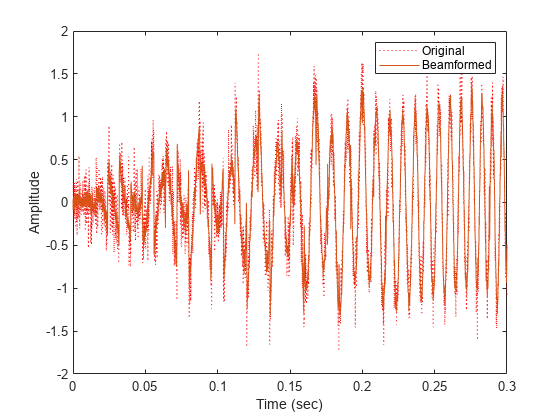phased.TimeDelayBeamformer
Time delay beamformer
Description
The phased.TimeDelayBeamformer
System object™ object implements a time delay beamformer. The object performs delay and sum
beamforming on the received signal by using time delays.
To implement a time delay beamformer:
Create the
phased.TimeDelayBeamformerobject and set its properties.Call the object with arguments, as if it were a function.
To learn more about how System objects work, see What Are System Objects?
Creation
Syntax
Description
timeDelayBeamformer = phased.TimeDelayBeamformer creates a time
delay beamformer System object, timeDelayBeamformer.
timeDelayBeamformer = phased.TimeDelayBeamformer(
sets properties using one or more optional name-value arguments. For example,
Name=Value)SampleRate=2e6 sets the sample rate to 2e6.
Properties
Usage
Description
Y = timeDelayBeamformer(X,ang) additionally specifies the
beamforming direction, ang. To enable this syntax, set the
DirectionSource property value to"Input port".
[Y,W] = timeDelayBeamformer(___) additionally returns
the beamforming weights in W for any of the input argument
combinations in the previous syntaxes. To enable this syntax, set the
WeightsOutputPort property value to true.
W is a column vector of length N. For a time delay beamformer, the
weights are constant because the beamformer simply adds all the channels together and
scales the result to preserve the signal power.
Input Arguments
Output Arguments
Object Functions
To use an object function, specify the
System object as the first input argument. For
example, to release system resources of a System object named obj, use
this syntax:
release(obj)
Examples
Algorithms
References
[1] Van Trees, H. Optimum Array Processing. New York: Wiley-Interscience, 2002.
Extended Capabilities
Version History
Introduced in R2011a
